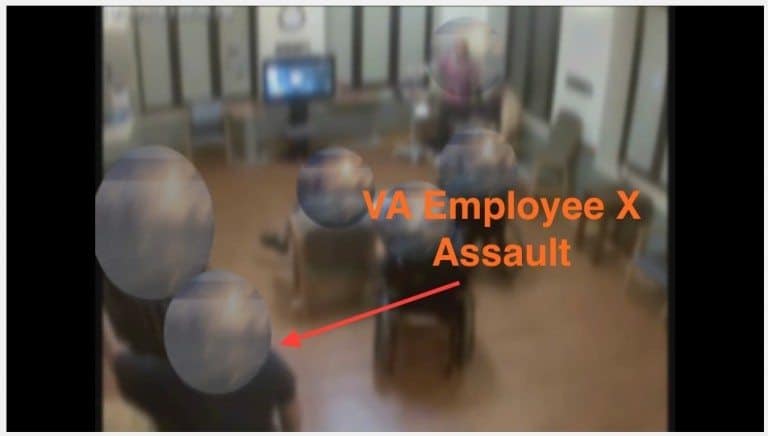VA Testing Meditation As A Treatment For PTSD
In investigating ways to treat post-traumatic stress, the Department of Veterans Affairs (VA) is studying the use of transcendental meditation (TM) to help returning veterans of Iraq and Afghanistan.
The VA’s $5.9 billion system for mental-health care is under sharp criticism, especially after the release of an inspector general’s report last month that found that the VA has stretched the truth in how quickly it treats veterans seeking mental health services.
VA has a “huge investment” in mental health care but is seeking alternative ways outside of conventional psychiatric treatment, said W. Scott Gould, Deputy Secretary of the VA.
“Conventional approaches fall woefully short of the mark, so we clearly need a new approach,” said Norman Rosenthal, a clinical professor of psychiatry at Georgetown University’s medical school.
Rosenthal told the gathering that TM, a meditative practice that advocates say helps manage stress and depression, is “possibly even a game-changer” in how to treat PTSD.
Do you think that TM and other alternative treatments should be investigated in helping those with PTSD?



As a devote Christan They can stick there Hindu Religion were the Sun don’t shine If They ever try this Crap On this former seminarian , I am a ordained Minister I have Larson’s book of cults… TM.. is a form a of Hindu worship. if Chaplains in The military and The VA are now being told Not to end a prayer in “Jesus Name ” No way
I am filing this Notice of Disagreement with the decision dated December 16, 2010, on my request for Individual Unemployability. I feel that your decision was not looked more in detail of my physical problems. The doctor that examined me made an evaluation that I am capable of gainful employment in a sedentary field job. Sedentary work involves me to lifting no more than 10 pounds at a time and occasionally lifting and carrying articles like, docket files, ledgers and small tools. Also sitting with occasional walking and standing. I find it very painful when I am sitting for long periods of time. My back starts hurting me and I have difficulty standing up after sitting for any period of time. Both my legs going from both my hips start direct pressure on to both of my sciatic nerves and filter down to my feet. I have a Handicap window placet that is issued by the State of New Hampshire. This placet is permitted and not temporary. When I go shopping. I have to use the electric wheel chairs with the small basket to just to perform my shopping needs. I also take Cyclobenzaprine Hcl 10 mg three times per day. When I take one it makes me very sleepy, fatigue and dizziness. To perform in a sitting down job, I would be dosing off at a desk or computer terminal. I try to limit my dosage when going to do shopping. It is recommended that when I take this medication I limit my driving and also do not operate machinery. It is a muscle relaxer. It is issued by the Veterans Administration and my Primary Care Doctor. I also take 800 mg of Ibuprofen three times per day. It is also issued by the Veterans Administration and my Primary Care Doctor. Every time I wake up in the morning I have stiffness pain I have difficulty walking and pain in the hips, buttocks. I have very difficulty standing up after sitting for any period of time. It makes life more difficult for me to perform in a normal life function. I can not sit in a car as a passenger for long drives as I start getting pain in my hips and my legs. I have had to pull over to the side of the road to relieve the pain in the back of my legs from sitting. I do not take long road trips. I stay very close to home. I also have difficulty in walking up stair cases. When I was examined on December 8, 2010. The doctor noticed that I was sitting. Well what else could I do? It was an exam. I was in great pain. But that was not documented in the decision. I also had great pain when I got home and I had very great difficulty the next few days after the exam on December 8, 2010. I also have a problem with my right shoulder that was examined on December 8, 2010. I also have a problem with my right foot that I wear special foot inserts and special shoes that are issued by the Veterans Administration. My neck was also examined on December 8, 2010. I have limited movement in turning my neck. I was asked if I was issued a Tens device for my back.
Well to start off with, I suffer from Lumbosacral Degenerative Disc Disease rated at 40 %. Cervical Degenerative Disc Disease rated at 20% and Left Sacroiliac Sensory Radiculopathy rated at 10%. Total rating is 60% in all. I have gone from 20% to 40% to my present rating of 60% from 1996 to 2004. I have gone through Voc Rehab 3 times in training in the computer field. I have never had a full-time job in all these years. I have only been able to gain temporary work. No longer then 3 to 6 months. Most of the time I have been unemployed. I use to live in Massachusetts. I became a member of the DAV back in 1996. I am present a life member of the DAV. DAV has helped my in so many ways to achieve my ratings increases. I moved to the state of New Hampshire in 2005. I signed up for Voc Rehab in Manchester, NH. They sent me to another computer school to upgrade my knowledge in computer one more time. But I have not yet been able to accomplish that goal. I could only gain employment in what I call pick and shovel jobs. My last MRI, my primary care doctor from the VA told me that I had gotten worse and I could not work physical jobs anymore. I was sent to physical therapy. Now from my house to Manchester NH it takes me 1 hour and 15 minutes one way. I had to go there every 3 days. I also have problems with my right shoulder. Well I am not rich and gas is expensive. I have not had a job in 3 ½ years. I decided to put in to total Unemployability in March 2010. I was notified by VA that my exam would be on December 8, 2010. I was so looking forward in this exam. I had the backing of the DAV and I made sure that all my ducks were in order. All my T’s and I’s crossed and dotted. I went on my exam I was 15 minute early like they explain for any additional paper work to be filled out. My appointment was at 2:00 pm,. The doctor got me from the waiting room and had me go with her to the examination room. After talking and answering question. I had to do some physical movements that I told her that I could not perform the tasks that she wanted me to do. She told me that I had to do everything she demanded even if it hurt. The exam only took 45 minutes. Then I was sent home. Now what I am about to tell you should be in the Guinness Book of World Records. A decision was made on my rating on December 16, 2010, 8 days from the exam. I could not beleave it. I got the decision through the mail on December 23, 2010 right before Christmas of 2010. VA’s findings as follows
1. Evaluation of Lumbosacral Degenerative Disc Disease, whit is corrently 40% disabling is continued.
2. Evaluation of Cervical Degenerative Disc Disease, which is currently 20% disabling, is continued.
3. Evaluation of Left Sacroiliac Sensory Radiculopathy, with is corrently 10% disabling is continued.
REASONS FOR DECISION
Review of your VA treatment records show that you had imaging completed in January 2010, indicating a Herniated Nucleus Pulposus. You were referred for physical therapy to be followed with pain management. You were treid on mechanical traction which was unsuccessful, and were issued a TENS unit. You advised that eh TENs had given some temporary relief of pain.
We attemped to obtain your private treatment records from Dr.XXXXXXXXX. Our July 2, 2010 letter advised you of this, but also encouraged you to obtain these records and to sent them to us. As of this date, we have not received any reconds from Dr.xxxxxxxxx Office (denote Dr. XXXXXXXXX is my primary care doctor that is a VA doctor not a private one.)
At your recent VA examination, it was noted that you walk with a cane. The examiner commented that you were observed sitting for longer then 30 minutes with out any complaint of back pain.(denote, it was an exam what is one suppose to do at an exam, stand up all the time or lie on a bed or floor, Daa)
ENTITLEMENT TO INDIVIDUAL UNEMPLOYABLILTY
After undergoing a thorough VA examination, it was medically opined that although your service connected disabilities would have a major impact on your ability to work a physical job., they do not limit you for working a sedentary job. You are considered capable of gainful employment in a sedentary firld. Therefore entitlement to individual Unemployability is denied.
Well I sent in a Notice of Disagreement on December 28, 2010. I recently had a video conference with a VA decision rater or so with DAV representing me with all of my facts and meds I take. I am waiting for a decision on what I had presented and there findings.
please send all information on benefits for veterans! Thanks
Most definitely! The VA also should look at alternative treatments for other conditions such as fibromyalgia, depression, spinal pain, chronic pain and so many other conditions in which stress reduction, exercise and distraction therapy has been proven to help. Therapeutic massage, acupuncture, water/aquatic therapy and a PTSD therapy app for smartphones have shown to be useful in relieving stress and depression.
Interesting. Knowing what we know about the cyclic nature of PTSD, this may be a step in the right direction. If it kills the self eating snake, then great. I practice meditation, and people starting out need to know that it takes a hard core investment of time and patience. It takes 6-8 weeks to form a habit and start to see results, and its like working out. You have to do it every day. The good news is that it reduces cortisol levels (a hormone we get when stressed that harms your cells and overall health and disrupts sleep.) That in itself may make a HUGE difference to people that are trying to cope when they get home. Adjunct therapies are worth exploring as long as there is an evidence basis for implementing it across theraputic ranges.
Yes, I believe it is worthwhile to run clinical trials on TM. TM is a big word for essentially distraction from negative thinking. Positive thinking replaces negative thinking.